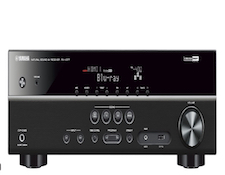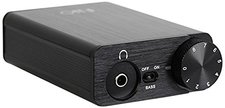It’s the time of year for saving money!
Last week I wrote a column about why old, inexpensive $300 to $500 receivers made in 1980 or thereabouts were inferior to what you can get today once you adjust for inflation. $300 in 1980 equals $861 in today’s money. Looking through my dog-eared copy of Audio Magazine’s 1984 Annual Equipment Directory, the least expensive stereo receiver in JR Music World’s small ad (Who were still in business until 2014) listed a Technics SA450 for $219.95, which would be $634 in 2014 dollars. In my first column I listed some of the reasons that a new $634 receiver would be a better value (actually I used a $500 receiver in the article but the results were equivalent).
 But what happens if we reverse the argument? Lets find the least expensive new receiver in 2015 and see if we could find anything in 1984 that would be equivalent.
But what happens if we reverse the argument? Lets find the least expensive new receiver in 2015 and see if we could find anything in 1984 that would be equivalent.
First, let’s see how much money we’ll have to work with – $300 2015 dollars would equal $131.06 in 1984 (I chose that because I have Audio Magazine’s “Audio Bible” for that year).
Looking through Amazon’s current collection of receivers I found a Yamaha RX-V377 with a current “street price” of $179.95. That would be $78.61 in 1984 dollars. In 1984 the least expensive Yamaha receiver was the R-30 at $249.00 ($569 in 2015 dollars) it was rated at 25 watts per side. Perusing through all the receivers listed in 1984, the least expensive model was the Sharp SA-150 for $119.95 ($272.40 in 2015 dollars). So, if I were a cash-strapped young twenty-something in 1984 and only had $225 (in 2015 dollars) to spend on a new stereo receiver I would simply be out of luck. Given the rarity of the Sharp SA-150 (no pictures available via a Google search and only service manuals for sale on EBAY) we can probably safely assume that few have survived, working, to this day.
Flash forward to now. Let’s give $225 to a contemporary twenty-something music lover for audio gear. First shocker – they very likely will not even consider a receiver. No, they would opt for portable, personal audio that goes where they go. For about $100 you can get a FIO X1 player, which is a portable MP3 player that can also play APE, FLAC, WAV, WMA, ALAC, at up to 192kHz/24, or a FIO E10K which is a USB DAC is capable of handling PCM files in up to 24-bit, 96 kHz, and tether either one to a pair of Shure E215 in-ears or Grado SR 80 headphones and you’ll wind up with a rig that is on-budget and capable of delivering high-resolution music.
My point in all this is not to denigrate vintage gear. I firmly believe that the best vintage stuff, if properly maintained, can perform on a level that equals currently available gear. I keep around a fully refurbished Accuphase P-300 from 1977 to prove my point. But I also believe that today’s audiophiles, especially younger audiophiles on tight budgets, have better, cheaper, and higher fidelity entry-level options than ever before.
 There has never been a better time in human history to be an audiophile. We have more equipment choices, better options, and more music to listen to than any time in the past. Yay us…perhaps this column should be considered a late thanksgiving piece, because we conteporary audiophiles have plenty to be thankful for.
There has never been a better time in human history to be an audiophile. We have more equipment choices, better options, and more music to listen to than any time in the past. Yay us…perhaps this column should be considered a late thanksgiving piece, because we conteporary audiophiles have plenty to be thankful for.





